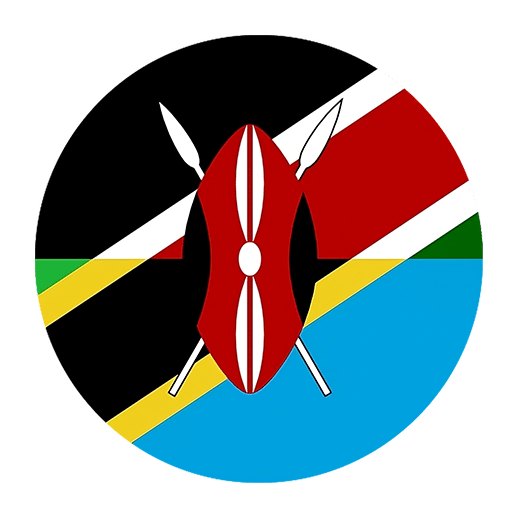Learning a new language is a rewarding and enriching experience, and Swahili, with its melodic tones and cultural significance, is no exception. As with any language, one effective method of learning and retaining new vocabulary is through the use of flashcards. Flashcards are a versatile and engaging tool that can help you master Swahili at your own pace. This article will guide you through creating Swahili flashcards for effective learning, covering everything from the basics of vocabulary selection to advanced techniques for maximizing your learning potential.
Why Flashcards?
Flashcards are a tried-and-true method for language learning for several reasons. They allow for repetitive practice, which is crucial for memorization. Flashcards also engage active recall, a process where you stimulate memory during the learning process, which is more effective than passive study methods. Additionally, they are highly portable, making it easy to study on the go, and can be customized to suit your individual learning needs.
Getting Started: Basic Vocabulary
When creating your Swahili flashcards, it’s essential to start with basic vocabulary. This foundational knowledge will make it easier to learn more complex words and phrases later on. Here are some fundamental categories to consider:
Greetings and Common Phrases:
– Hello – Habari
– Good morning – Habari za asubuhi
– Good evening – Habari za jioni
– Thank you – Asante
– Please – Tafadhali
– Yes – Ndiyo
– No – Hapana
Numbers:
– One – Moja
– Two – Mbili
– Three – Tatu
– Four – Nne
– Five – Tano
Days of the Week:
– Monday – Jumatatu
– Tuesday – Jumanne
– Wednesday – Jumatano
– Thursday – Alhamisi
– Friday – Ijumaa
– Saturday – Jumamosi
– Sunday – Jumapili
Common Verbs:
– To eat – Kula
– To drink – Kunywa
– To go – Kwenda
– To see – Kuona
– To speak – Kuzungumza
Creating Your Flashcards
Now that you have a list of basic vocabulary, it’s time to create your flashcards. You can choose to make physical flashcards or use digital flashcard apps such as Anki, Quizlet, or Memrise. Both methods have their advantages, so choose the one that best fits your lifestyle and learning preferences.
Physical Flashcards:
1. **Materials**: Gather index cards or cut pieces of sturdy paper, and a pen or marker.
2. **Content**: Write the Swahili word on one side of the card and the English translation on the other. For example, one side of the card might say “Habari,” and the other side would say “Hello.”
3. **Visuals**: Incorporate images where possible. Visual aids can significantly enhance memory retention. For instance, a picture of a sun can accompany “Jua” (sun).
4. **Organization**: Group your flashcards by categories such as greetings, numbers, or verbs. This will help you focus on specific areas as needed.
Digital Flashcards:
1. **Platform**: Choose a digital flashcard app. Each has its unique features, so explore a few to find the one that best suits your needs.
2. **Creation**: Enter your vocabulary list into the app, ensuring you include both the Swahili words and their English translations.
3. **Customization**: Take advantage of the app’s features, such as adding images, audio pronunciation, and example sentences. These additional elements can make your flashcards more interactive and engaging.
4. **Review Schedule**: Set up a review schedule within the app to ensure consistent practice. Many apps use spaced repetition algorithms to optimize your learning process.
Advanced Techniques for Flashcard Use
Once you have your flashcards ready, it’s essential to use them effectively. Here are some advanced techniques to enhance your learning experience:
Spaced Repetition:
This technique involves reviewing flashcards at increasing intervals. It’s based on the principle that information is more likely to be remembered if it is reviewed periodically over time. Many digital flashcard apps have built-in spaced repetition systems, but you can also implement this technique manually with physical flashcards.
Active Recall:
Actively trying to remember the information on a flashcard, rather than passively flipping through them, significantly enhances memory retention. When using your flashcards, try to recall the Swahili word before flipping the card to check the answer.
Incorporate All Senses:
Engage as many senses as possible while using your flashcards. Say the words out loud to practice pronunciation, write them down to reinforce spelling, and use images to create visual associations.
Contextual Learning:
Create sentences using the words on your flashcards. This helps you understand how to use the vocabulary in context, making it easier to remember and apply in real-life situations. For instance, instead of just memorizing “Kula” (to eat), you might create a sentence like “Ninataka kula” (I want to eat).
Regular Review Sessions:
Set aside dedicated time each day for flashcard review. Consistency is key in language learning. Short, frequent study sessions are more effective than longer, infrequent ones.
Expanding Your Vocabulary
As you become more comfortable with basic vocabulary, start expanding your flashcard collection to include more complex words and phrases. Consider adding the following categories:
Adjectives:
– Big – Kubwa
– Small – Ndogo
– Happy – Furaha
– Sad – Huzuni
– Fast – Haraka
Food and Drink:
– Water – Maji
– Bread – Mkate
– Rice – Mchele
– Chicken – Kuku
– Tea – Chai
Places:
– School – Shule
– Market – Soko
– Hospital – Hospitali
– Restaurant – Mgahawa
– Home – Nyumbani
Advanced Verbs:
– To understand – Kuelewa
– To learn – Kujifunza
– To teach – Kufundisha
– To write – Kuandika
– To read – Kusoma
Using Flashcards in Daily Life
Incorporating your flashcards into your daily routine can further enhance your learning experience. Here are some practical tips:
Label Your Environment:
Place flashcards on objects around your home or workspace. For example, put a card saying “Kiti” (chair) on your chair or “Mlango” (door) on your door. This constant exposure helps reinforce vocabulary.
Practice with a Partner:
If possible, practice using flashcards with a friend or language partner. Quiz each other and engage in conversations using the vocabulary on your cards. This not only makes learning more interactive but also improves your speaking and listening skills.
Use Technology:
Take advantage of language learning apps and online resources to supplement your flashcards. Many apps offer interactive exercises, quizzes, and games that can make learning more enjoyable.
Integrate Flashcards into Your Routine:
Carry a few flashcards with you and review them during spare moments throughout the day, such as during your commute or while waiting in line. These short, frequent study sessions can significantly boost your retention.
Monitoring Progress and Adjusting
To ensure continuous improvement, it’s essential to monitor your progress and adjust your flashcard strategy as needed.
Track Your Learning:
Keep a journal or use an app to track which words you’ve mastered and which ones you’re struggling with. This will help you identify areas that need more focus.
Adjust Difficulty:
As you become more proficient, gradually increase the difficulty of your flashcards. Add more complex words, phrases, and sentences to challenge yourself and keep your learning dynamic.
Celebrate Milestones:
Set goals and celebrate when you achieve them. Whether it’s mastering a certain number of flashcards or being able to hold a basic conversation in Swahili, acknowledging your progress will keep you motivated.
Conclusion
Creating and using Swahili flashcards is a powerful method for effective language learning. By starting with basic vocabulary, utilizing both physical and digital flashcards, and employing advanced learning techniques, you can enhance your memory retention and build a strong foundation in Swahili. Remember to integrate your flashcards into your daily life, monitor your progress, and adjust your strategy as needed. With dedication and consistent practice, you’ll find yourself mastering Swahili and enjoying the rich cultural experiences that come with it. Happy learning!

